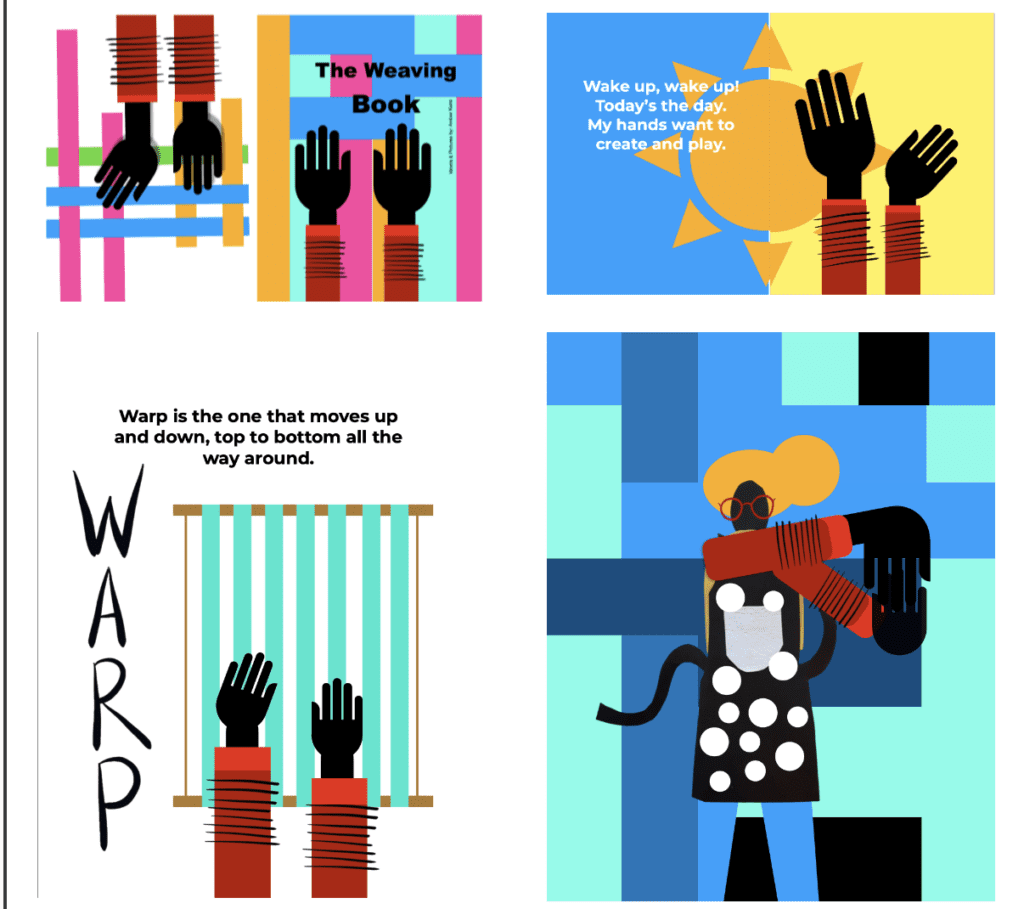How to Find Ideas to Inspire Your Work
“ The arts allow us to dance on the edge of uncertainty and invite in creativity, expanded awareness, expanded perception, play, and more prosocial behavior.” Barbara
One of the best ways to learn how to build a body of work is to look at bodies of work and reflect on what you love and don’t love about them.
Watch the video above.
Grab your sketchbook and look at the work of artist, Gego. What do you love and want to incorporate into your work? What don’t you like and want to avoid in your work? What questions came to your mind while you watched the video?
Body of Work as a Book

Picture books are a wonderful place to find inspiration and better understand an artist’s style and body of work. Look at one picture book and see how it builds a body of work. Or, look at several picture books by the same illustrator. What would your work look like as a picture book? What story would you tell?
The Illustrations above are from a colorful and playful picture book, The Weaving Book, that walks you through the artistic process while also teaching you how to weave.
The illustrations were created through a mix of cut paper collages, and digital elements. When looking at the work of Gego, you may have seen some of her layered and textured paper weavings. The Weaving Book is a perfect book to help get you started and can give you ideas about how to create a body of work. This book comes in both English and Spanish.
PS: If you haven’t tried paper weaving, it’s far more magical and versatile than you may think. It’s also a perfect process to explore while traveling, as you’re sure to find paper all around you.
Book: Your Brain on Art: pg 244
“ You have a daily art practice that is as vital to you as exercise and meditation routines. Art, you now understand, isn’t only a hobby, it’s a conversation with yourself, a way to connect your mind, body, and spirit and to support your health and wellness. Some days it’s just twenty minutes of sketching or doodling to reduce cortisol after a challenging or stressful experience. Other times, it’s something tactile, like sculpting with clay, knitting, or gardening, where your mind wanders into a flow state. The sensation of working the clay, the yarn, and the soil, in your hands stimulates skin and nerve endings and ignites the body’s internal sensory receptors. Through sensorimotor pathways, you feel instantly attentive, awake, and receptive. Art-making here is not about the end product. It is a process, an active way of being and knowing.”
What is your daily creative practice?
Have you made a mark today? Put something on paper, cut something out, photograph it, add the elements to Canva, and see what you can create.